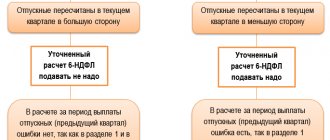The nuances of conducting tests in various situations were repeatedly explained by senior judges. New trends in the testing are indicated in the Resolution of the Plenum of the Supreme Court of the Russian Federation dated June 11, 2020 No. 6 “On some issues of application of the provisions of the Civil Code of the Russian Federation on the termination of obligations.”
Let us briefly recall that offset is a method of terminating obligations (in whole or in part) when certain conditions are met. These conditions are specified in Article 410 of the Civil Code of the Russian Federation. So, in order to offset debts, claims must be counter-claims (i.e. when the counterparties have mutual debts), homogeneous, with a due date for their execution or with an unspecified period or with a period determined by the moment of demand. And in some cases, it is allowed to set off a counterclaim of the same type, the deadline for which has not come. For offset, a statement from one party is sufficient.
New introductory notes from senior judges
In order to ensure a unified approach in the practice of application by courts of the provisions of the Civil Code of the Russian Federation on the termination of obligations, the Plenum clarified certain rules for conducting offsets.
In the Resolution, the Plenum uses such unusual concepts as active and passive requirements. The first means the requirement of the offset initiator (i.e., it is the requirement of the person who makes the application for offset), the second is the requirement that is used to offset the active claim (i.e., the claim against the offset applicant himself).
Uniformity of requirements
For credit, it is sufficient that the requirements are uniform at the time of the test.
This means that the counterclaims of the parties at the time of their occurrence (i.e. initially) may be heterogeneous (for example, a demand for the transfer of an item and a demand for the return of the loan amount), and by the time of offset they will already be homogeneous (a demand for compensation for damages for violation obligations to transfer the item and the requirement to repay the loan amount).
Article 410 of the Civil Code of the Russian Federation allows, among other things, the offset of active and passive claims that arose from different grounds. In this case, the criterion of homogeneity is met when offsetting the requirement for payment of the principal debt (for example, the purchase price under a purchase and sale agreement) against the requirement for payment of a penalty, interest or compensation for losses (for example, due to delay in performance of work under a contract).
This approach is already used in judicial practice. Thus, in the Resolution of the Moscow District Administration of June 26, 2020 No. A40-221264/2019, the following situation is considered.
The buyer, in violation of the terms of the supply agreement, unreasonably refused to accept the supplier’s products. As a result, the supplier incurred losses for excess turnover of wagons and payment for storage services due to the fault of the buyer. And since the buyer refused to compensate for the losses, the supplier offset counterclaims for this amount. This offset was recognized by the court as lawful.
"Occurrence" of requirements
“Concurrence” of claims means that obligations arise from the same persons, who are both debtors and creditors in relation to each other. This definition of “meeting” was previously given by the Presidium of the Supreme Arbitration Court of the Russian Federation in Resolution No. 14321/11 dated February 21, 2012.
In certain cases provided for by law or agreement, offset may be carried out against claims that are not counterclaims. For example, when fulfilling an obligation by a third party (clause 4 of Article 313 of the Civil Code of the Russian Federation).
Netting between three organizations
Settlement between three organizations is possible with the mutual consent of all three parties. The possibility of offset is provided for in Art. 410 of the Civil Code of the Russian Federation, which states that the obligation is terminated in whole or in part by offsetting a counterclaim of the same type.
According to Article 153 of the Civil Code of the Russian Federation, actions of legal entities aimed at establishing, changing or terminating civil rights and obligations are recognized as transactions. In accordance with Article 154 of the Civil Code of the Russian Federation, transactions can be multilateral (agreements), the conclusion of which requires the expression of the agreed will of the three parties.
As a rule, the trigger for concluding a trilateral agreement is the presence of receivables and payables between the parties to the agreement.
This transaction allows you to achieve mutual repayment of obligations, avoiding cash payments. A feature of mutual settlement between organizations is that a party that does not have any obligations towards at least one of the parties cannot take part in this agreement. The tripartite agreement is carried out in the opposite direction to the flow of debt.
Example 1. LLC "ABV" has a debt to LLC "GDE" in the amount of 430,000 rubles, LLC "GDE" has a debt to LLC "ZhZI" in the amount of 560,000 rubles, LLC "ZhZI" has a debt to LLC "ABV" in the amount 150,000 rubles. The parties decided to enter into an agreement on mutual settlement between three organizations in order to partially repay obligations, namely for the amount of the smallest debt (150,000 rubles).
Thus, the offset looks like this: from LLC “ABV” to LLC “ZhZI”, from LLC “ZhZI” to LLC “GDE”, from LLC “GDE” to LLC “ABV”.
As a result of the transaction, the remaining debt is as follows: (click to expand)
- ABV LLC to GDE LLC – 280,000 rubles;
- LLC "GDE" to LLC "ZhZI" - 410,000 rubles;
- LLC ZhZI's obligations to LLC ABV have been terminated.
When obligations are considered terminated by offset
Obligations are considered terminated by offset in the amount of the lesser of them not from the moment the application for offset is received by the relevant party, but from the moment at which the obligations themselves become capable of offset. For example, if the deadline for fulfilling the requirements came before the statement of offset, then the obligations are considered terminated by offset from the moment the deadline for fulfilling the obligation arrived.
If the claims become counterclaims as a result of a change of person in the obligation, then the moment of their termination cannot be earlier than the date of such change.
Basic nuances of drawing up an act of offset of funds
A unified form of the document has not been developed at the legislative level, so it is drawn up in free form. The act must indicate a list of documents confirming the fact of the occurrence of debt (agreements, invoices, etc.), their numbers and dates of preparation. Also in the text it is necessary to indicate the amount of obligations that will be liquidated by offset, the amount of unset off debt and the period for its repayment. All amounts are written in numbers and words (to avoid errors).
A tripartite act of offset of mutual claims, a sample of which you will find below, is drawn up in triplicate. The document form must be signed and sealed by all parties. The executed act is the basis for offsetting mutual obligations and making the necessary accounting entries.
The debt settlement procedure begins by sending an application from one company to another. The amount of debt can be determined using a reconciliation report. It should be taken into account that obligations that have not yet expired are subject to offset. If entrepreneurs have never encountered the preparation of this document before, they can use the example of a triple netting act as a basis.
Set-off in case of expiration of the limitation period
Set-off cannot be carried out if the active claim (i.e. the claim made by the set-off applicant) has expired.
For example, it should. In turn, it should. The applicant for the offset is “Buttercup”. The statute of limitations on the accounts receivable has expired. Before the Plenum’s clarifications appeared, the courts denied the right to set-off if the statute of limitations had expired on the claims of both.
However, the expiration of the statute of limitations on a passive claim (in our example) does not prevent offset.
In practice, this means that if the company has made a claim for set-off, the company’s creditor has the right to set off its expired debt with a new claim.
At the same time, if the statute of limitations on an active claim expires, the debtor for it, having received an application for set-off, is not obliged to respond to it by notifying the creditor about the passage of the limitation period (clause 3 of Article 199 of the Civil Code of the Russian Federation).
Based on the conditions of our example, it is not profitable to take the initiative to conduct a test.
Settlement act, sample
Sometimes counterparties are faced with the question of conducting mutual offset transactions. For example, if two legal entities have entered into agreements with each other (for example, agreements for the provision of legal services), according to which they are obliged to perform certain actions in relation to each other, then counter obligations can be offset.
In accordance with Article 410 of the Civil Code of the Russian Federation, obligations can be terminated either in full or in part, taking into account a counterclaim of the same type, the time period for which has either already arrived, or its period is not specified or is determined by the date of demand. For offset, an application from one of the counterparties under the agreements is required. If the other party agrees, then an act of offset of claims is drawn up.
Cases when offset of claims is not possible in accordance with the law
1. If, at the request of one person, the claim is subject to a statute of limitations and this period has expired.
2. When compensating for harm caused to the personal health or life of an individual.
3. When collecting alimony.
4. With lifelong maintenance, etc.
If this does not contradict the existing agreements between the parties, then, in the event of an assignment of the right of claim, the debtor has the right to set off against the claim of the new creditor his counterclaim against the original creditor. This offset is made if the claim arose on the basis that existed at the time the debtor received the notice of assignment of the right of claim, and the term of the claim came before its receipt, or this period is not specified or is indicated by the moment of the claim.
Must be observed when drawing up the act
Firstly , obligations must be only between the parties to the agreements in question; if the demand is made by a third party that is not participating in these transactions (is not a party to the agreements within the framework of which offset is carried out), then drawing up this act is impossible.
Secondly , the act must indicate only homogeneous claims, for example, monetary claims and claims of a non-material nature are not subject to offset, since in this case the claims will be of a counter nature, and therefore cannot be offset in the act.
Thirdly , the parties have the right to make the necessary mutual offset only of those obligations (demands), the calendar deadline for fulfillment of which has already arrived in accordance with the contracts under study. Such a period must be specified in the contracts, otherwise the debt obligation of one party is recognized as arising from the moment when the other party fulfilled its obligation under the contract. In this case, the deadline for fulfilling obligations must pass.
It must be remembered that in accordance with the legislation of our country, offset of both full mutual obligations of the parties and their partial repayment is allowed. In this situation, the act must indicate the smallest amount of claims of one of the parties and a similar amount of claims of the other party.
Below is a sample of such an act, you can download it for free or use similar documents (for example: an act of acceptance and transfer of documents) posted on our website “Agreements for Everyone”. If you need our help, we are ready to prepare an act for your personal situation.
Offsetting act
Severodvinsk-15 November 17, 2013.
LLC "New Technologies" represented by the authorized representative Kuydev Farid Abdulkhayumovich, acting on the basis of power of attorney No. VAN/28574-34 dated November 17, 2013, hereinafter referred to as "Party 1", on the one hand, and LLC "Plasma Welding" represented by representative Mamin - Sedogo Sergei Stepanovich, acting on the basis of power of attorney No. 2376-38674-MSSS dated November 17, 2013, hereinafter referred to as “Party 2”, on the other hand, drew up this act (hereinafter referred to as the “Act”) on the following:
1. Under the service agreement dated March 20, 2013 No. 3496829-LRPO.
2. Under the service agreement dated April 1, 2013 No. 3968576-TRPA.
3. The parties agreed to offset the above-mentioned agreements in the amount of 1,495,832.01 (one million four hundred ninety-five thousand eight hundred thirty-two) rubles 01 kopecks. The uncredited amount in the amount of 39,586.07 (thirty-nine thousand five hundred eighty-six) rubles 07 kopecks is transferred by Party 1 to the settlement account of Party 2 within five banking days from the date of signing this Act.
etc…
The entire form of the netting act is in the attached file.
Extension of the method of offset in certain situations
Another innovation is the expansion of methods for carrying out offsets in the event that a creditor of a passive claim goes to court. Before the Plenum clarified, a counterclaim had to be filed in order to set off. Now you can not file a claim, but send a statement of offset to the other party and, in the objection to the claim, indicate the termination of the obligation through offset.
It is also possible to set off if the passive claim (i.e. the claim against the applicant) is confirmed by a court decision that has entered into force, but the active claim (i.e. the claim of the applicant) is not. Such set-off is allowed if the parties do not object to it.
Senior judges do not object to the offset in cases where enforcement proceedings have been initiated on one of the claims, but not on another.
Invalidation of offset
Set-off as a method of terminating an obligation is a unilateral transaction and can be declared invalid by the court, in particular, on the grounds provided for in Chapter 9 of the Civil Code of the Russian Federation. Let us recall that a unilateral transaction is a transaction for which, in accordance with the law, other legal acts or agreement of the parties, it is necessary and sufficient to express the will of one party (clause 1 and clause 2 of Article 154 of the Civil Code of the Russian Federation).
Set-off after filing a claim against the debtor
The RF Supreme Court allowed offset after a claim was filed
Before the adoption of Resolution of the Plenum of the Supreme Court of the Russian Federation dated June 11, 2020 N 6, the position on the inadmissibility of offset after filing a claim, expressed by the Presidium of the Supreme Arbitration Court of the Russian Federation in 2001, was relevant:
“After filing a claim against the debtor, it is not allowed to terminate the obligation by offsetting a counterclaim of the same type in accordance with the provisions of Art. 410 of the Civil Code of the Russian Federation. In this case, offset can be made when considering a counterclaim (clause 1 of the information letter of the Presidium of the Supreme Arbitration Court of the Russian Federation dated December 29, 2001 N 65 “Review of the practice of resolving disputes related to the termination of obligations by offsetting counter-similar claims”; ruling of the Supreme Court of the Russian Federation dated June 9, 2015 in case No. 307-ES15-795, A13-2077/2014).
A new look at this issue is reflected in paragraph 19 of the Resolution of the Plenum of the Supreme Court of the Russian Federation No. 6, which explains that obligations can be terminated by offset after filing a claim on one of the claims. In this case, the party, at its discretion, has the right to declare a set-off both in the counterclaim and in the defense to the claim. Moreover, also after filing a claim, the defendant has the right to send the plaintiff a statement of offset and indicate in the objection to the claim that the claim for which the claim was brought is terminated by offset.









